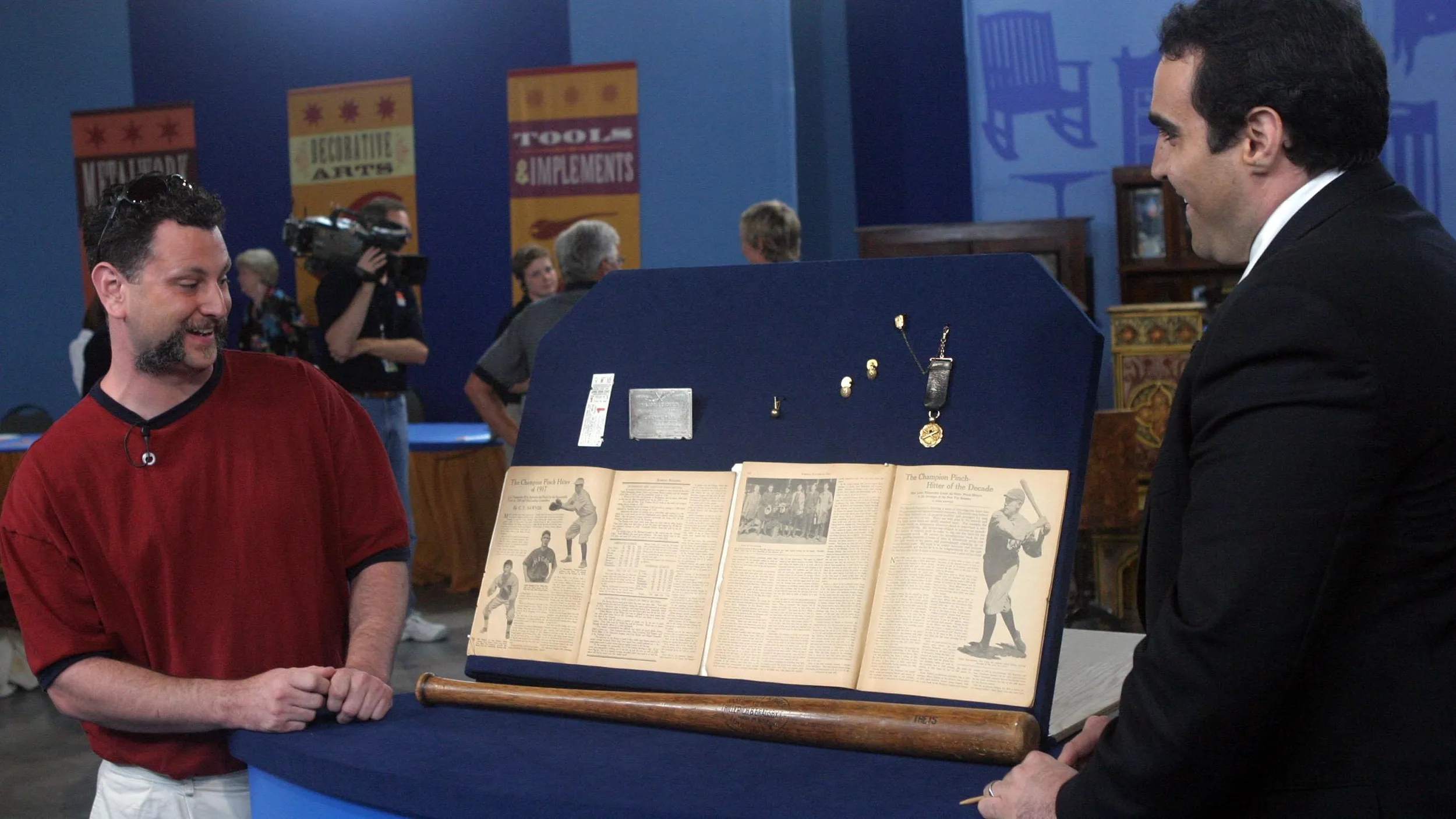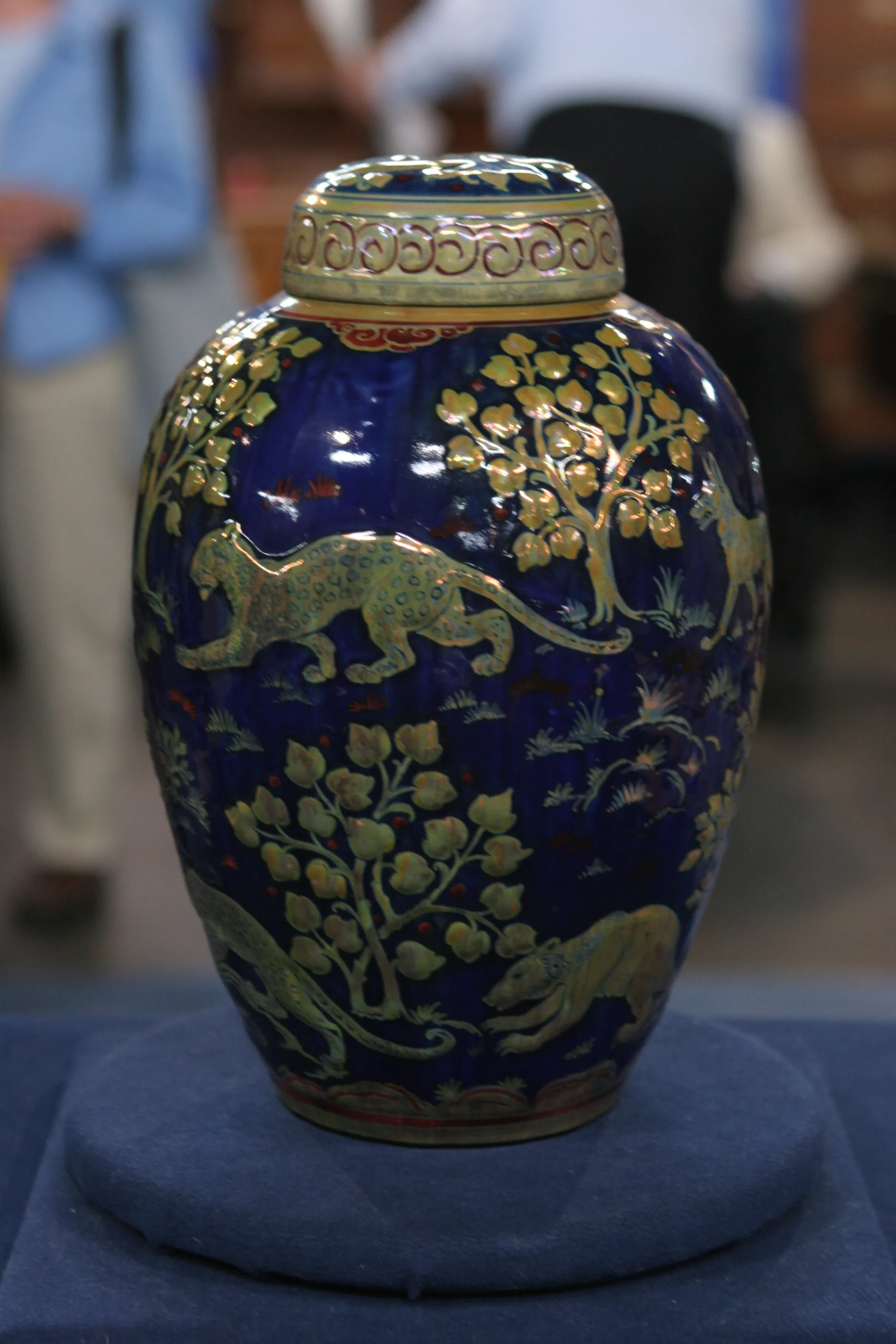GUEST: A friend of my husband's mother was moving into an apartment, and she had to downsize and get rid of a lot of her stuff, so she just gave it to us.
APPRAISER: It's a great sculpture. It's by one of the leading French sculptors of the 19th century. His name is Albert Carrier-Belleuse. Earlier in his career, he just signed his name "A. Carrier," and about the middle part of his career, he added the "Belleuse" part.
GUEST: Oh, okay.
APPRAISER: He was born in the early part of the 19th century. He was actually born in 1824. In 1850, he exhibited at a salon, which were annual exhibitions of the leading artists of their day.
GUEST: Right.
APPRAISER: And Carrier-Belleuse went on to become probably the most prominent sculptor of his period. He has a very varied career, because he was a teacher. His most famous student was Auguste Rodin, who, at the end of the 19th century, introduced Modernism into sculpture. And he was a very, very prominent sculptor. But another part of Carrier-Belleuse's career is, he spent some time in England, and he did designs for the Minton porcelain works.
GUEST: Oh!
APPRAISER: And he came back to France, and he eventually became the head of design for the Sèvres porcelain works.
GUEST: I see.
APPRAISER: So he was very, very active as a sculptor and really quite good. As you can see, this incredible detail, this wonderful observation of the costume.
GUEST: Right.
APPRAISER: This period, 19th century, the Victorian period, they were looking to the past. He also did Michelangelo, and they did sculptures of Leonardo da Vinci, but they also did Classical sculptures. They were always looking back, looking for new and interesting subject matter.
GUEST: Right.
APPRAISER: And this bronze is in wonderful condition. You have a wonderful surface, very nice color. It shows some signs of wear, which is perfectly acceptable in a sculpture like this.
GUEST: Uh-huh.
APPRAISER: And then in addition, it has some gilding. This sculpture's actually a cast that would have been made from a model. The artist would usually sculpt something in clay, or maybe even in wax, and from that they would make molds, or a series of molds.
GUEST: Okay.
APPRAISER: And then it would be cast into bronze.
GUEST: I see.
APPRAISER: And the artist would make these in editions, not limited editions, per se, like we have, like, "This is one of ten"-- that's a 20th-century concept.
GUEST: Okay.
APPRAISER: Earlier in the 19th century, artists would get commissioned to do it and they would just have them made as they needed them.
GUEST: I see.
APPRAISER: And they were actually cast in sections. This could have been cast in, like, ten or 15 different parts.
GUEST: Okay.
APPRAISER: You see that funny little circle there?
GUEST: Yes.
APPRAISER: What that is, is actually a cone-shaped pin, and what they did is, they would drive this cone-shaped pin in and it would bring the two pieces together.
GUEST: Oh, my God.
APPRAISER: And what happens is, over the years, the patina wears away and you see this little circle.
GUEST: Oh, for heaven's sake.
APPRAISER: I had never noticed that before. So it's really a great example of French 19th-century sculpture by one of the leading artists of the day. And at auction, this is a piece that would probably bring in the $6,000 to $8,000 price range.
GUEST: Wow. Fantastic.











